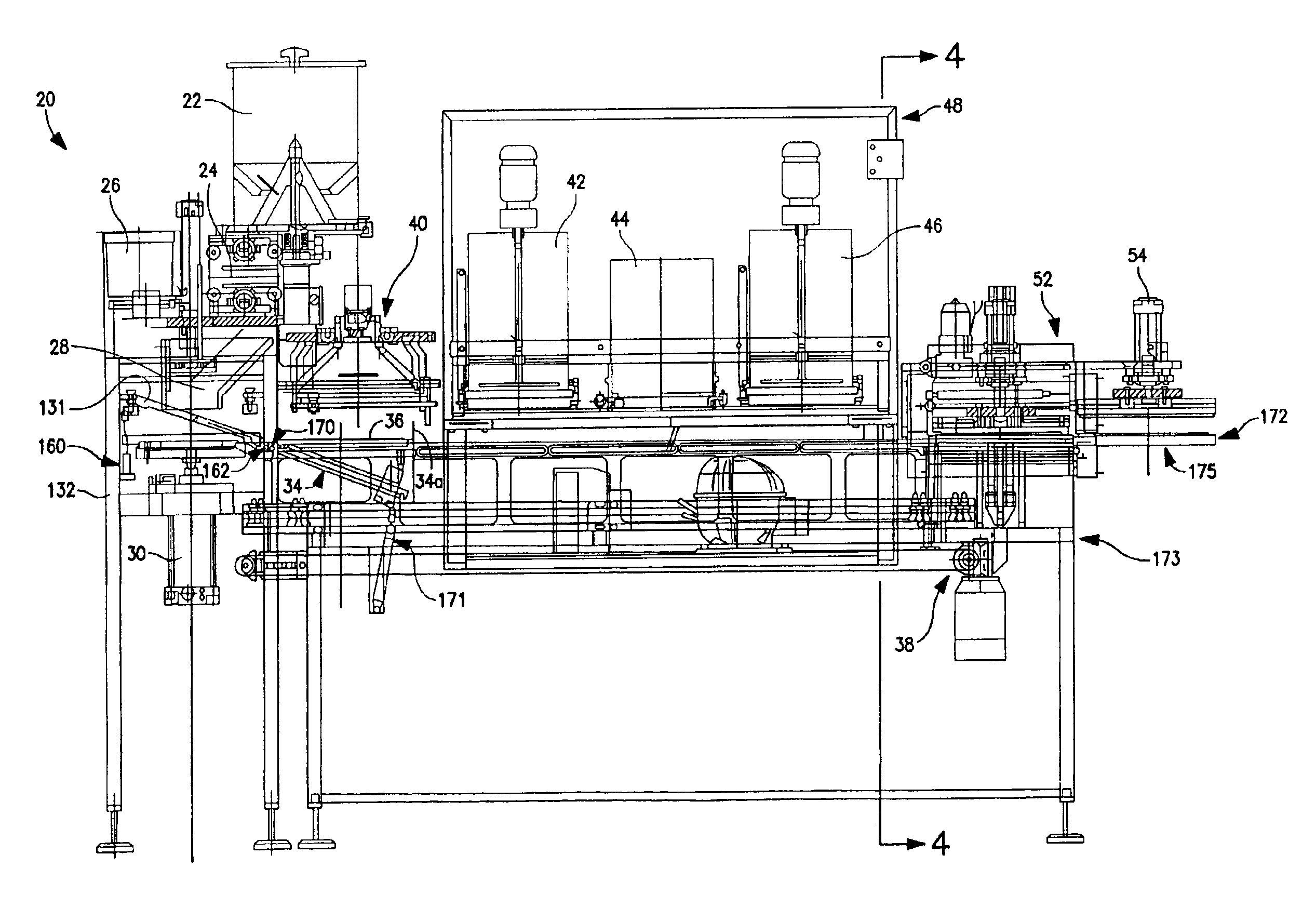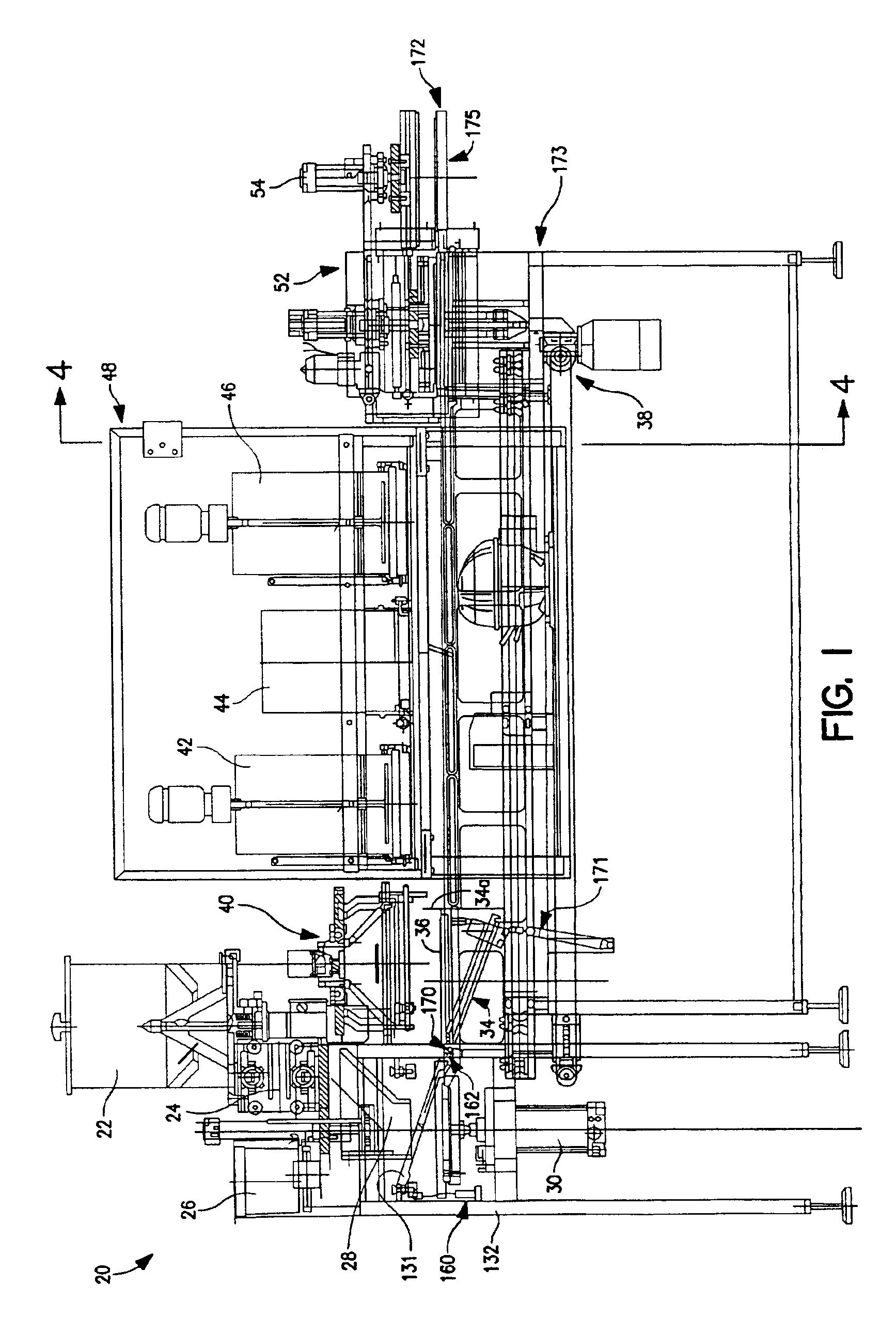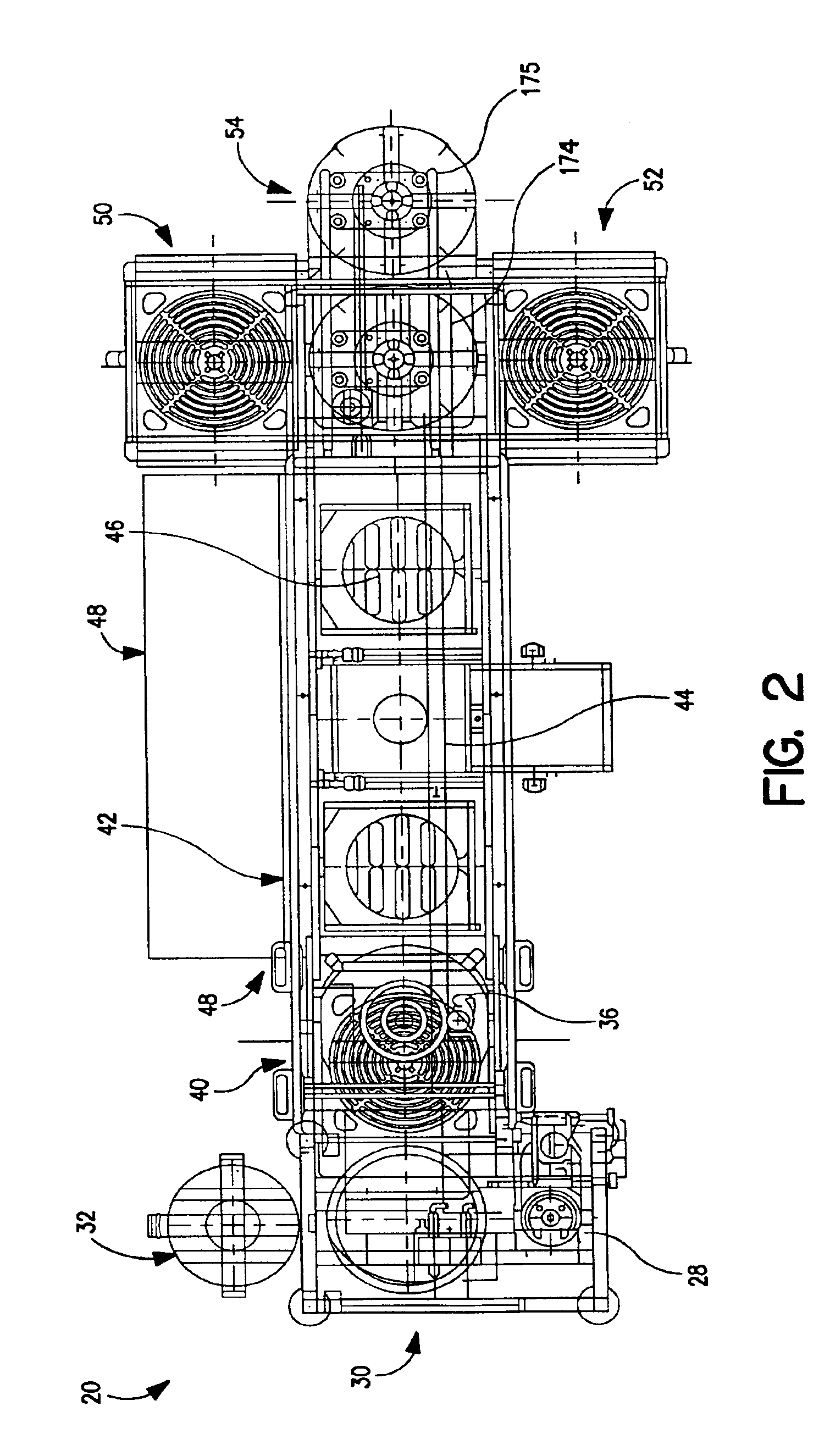Pizza making method and system
a technology of making method and system, applied in the field of pizza making, can solve the problems of not providing that each dough portion prepared and discharged for shaping leaves no ingredients or dough residue inside the device, known devices are not designed to perform periodic, completely automatic sterilization, kneading devices, etc., and achieves the effects of convenient removal, easy cleaning, and simple cutting
- Summary
- Abstract
- Description
- Claims
- Application Information
AI Technical Summary
Benefits of technology
Problems solved by technology
Method used
Image
Examples
Embodiment Construction
[0055]Referring now to the drawings, wherein like numerals indicate like elements, there is shown in FIGS. 1 through 4 an illustration of an automatic pizza making system 20. The pizza making system includes a flour container 22, a dough mixer 24, a water and leveling agent container 26, a pre-former 28, a hot press 30, a dough punching device 32, a receiving rack 34, a conveying tray 36, a tray conveying system 38, a tomato sauce dispenser 40, a cheese dispenser 42, a pepperoni dispenser 44, a sausage dispenser 46, a refrigerator 48, a first oven 50, a second oven 52 and a cutting device 54.
Flour Container and Dough Mixer (FIGS. 5 & 6)
[0056]The dough mixer of the present invention is designed for preparing individual dough portions per each work cycle within relatively short periods of time and by charging with ingredients in individual portions. The dough mixer provides that every individual mixed dough portion that is rolled into a ball and is ready for shaping and baking can be ...
PUM
 Login to View More
Login to View More Abstract
Description
Claims
Application Information
 Login to View More
Login to View More - R&D
- Intellectual Property
- Life Sciences
- Materials
- Tech Scout
- Unparalleled Data Quality
- Higher Quality Content
- 60% Fewer Hallucinations
Browse by: Latest US Patents, China's latest patents, Technical Efficacy Thesaurus, Application Domain, Technology Topic, Popular Technical Reports.
© 2025 PatSnap. All rights reserved.Legal|Privacy policy|Modern Slavery Act Transparency Statement|Sitemap|About US| Contact US: help@patsnap.com



